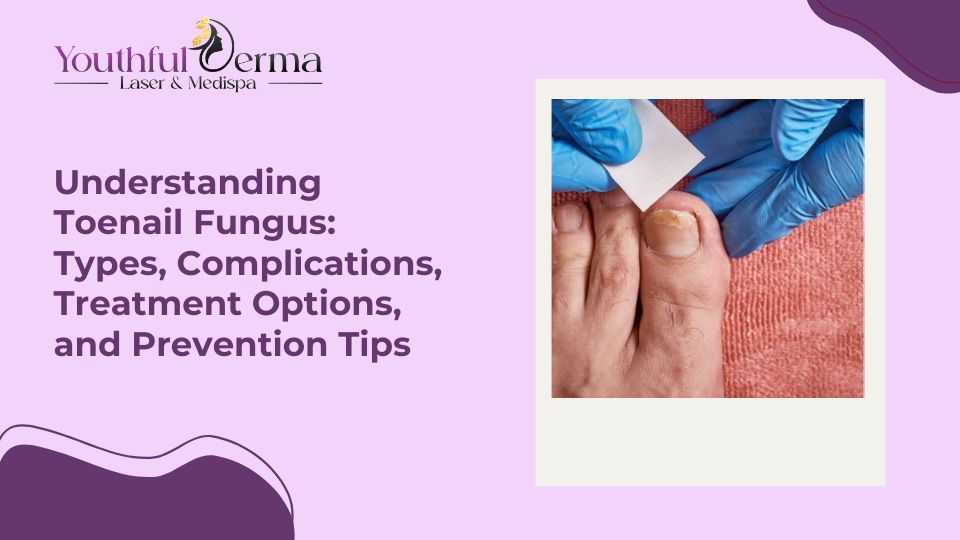What is Toenail Fungus Infection?
Toenail fungus infection, also known as Onychomycosis, invades your nails and is a very common condition. This infection can affect both fingernails and toenails, leading to discoloration, thickening, and potentially the crumbling of the nails.

Types of Fungal Nail Infections
White Superficial Onychomycosis
White superficial onychomycosis only affects the surface of the nails, mainly the toenails. It begins as white spots on the nail surface, which become powdery and cause the nails to crumble over time.
Distal or Lateral Subungual Fungus
This is the most common type of toenail fungus infection, caused by a fungus known as dermatophyte. It can affect both fingernails and toenails, starting in the nail bed underneath the nail. The infection appears as a yellowish-colored area that spreads from the edge of the nail to the center, causing the nail to separate from the nail bed.
Candida Onychomycosis
Candida onychomycosis is caused by yeast and primarily affects the fingernails. The area around the nails often becomes swollen and inflamed, and in severe cases, the nail may come off entirely. This infection may result from an injury or a previous infection.
Proximal Subungual Onychomycosis
Proximal subungual onychomycosis appears as white spots in the center of the nail bed at the cuticles and moves outward as the nail grows. This rare type of infection often affects individuals with immune system problems, such as those with HIV.
Complications of Toenail Fungus
Toenail fungus can take up to a year or more to fully resolve, and some problems may persist. The fungus has the potential to return, so it is crucial to follow your doctor’s instructions on medication and complete the full course of treatment to minimize the risk of recurrence.
Consequences of Delaying Treatment
Leaving toenail fungus untreated for too long can lead to several complications:
- Treatment becomes much more difficult and prolonged, potentially taking several months or years for the fungus to be eliminated.
- Toenails may become permanently discolored or altered.
- The infection may spread to other parts of the body, particularly in individuals with diabetes or other conditions that impair the immune system or circulation.
- A compromised immune system or poor circulation also increases susceptibility to contracting the fungus.
Treatment Options
Approximately 1 in 10 people experience toenail fungus infection. Family doctors often diagnose and treat this condition with topical and oral antifungal medications. However, certain types of fungus are challenging to treat with medication alone. At Youthful Derma, we have successfully treated various types of fungus using a combination of laser therapy and oral/topical medications, or in some cases, laser therapy alone.
Prevention is Better Than Cure
To prevent toenail fungus, follow these tips:
- Trim your fingernails and toenails straight across.
- If your feet sweat a lot, wear moisture-absorbing socks, change socks daily, or take off your shoes to cool your feet.
- Keep your shoes clean and discard old, dirty shoes as they can harbor fungus.
- Be cautious in public pools and open, moist places where you are walking barefoot, as these are common places for infection spread. Many patients report contracting the infection from swimming abroad in areas with inadequate sanitation.
- For manicures, visit salons that disinfect tools after each client, or bring your own nail care kit from home. Ensure that your cuticles are not cut too much, as small cuts can be entry points for bacteria.
- Since toenail fungus is contagious, keep your towels, shoes, socks, etc., separate from those of someone who has the infection.
47 Lakeshore Rd E, Unit 100 Mississauga ON, L5G 1C9
3281 Aubrey Rd, Mississauga, ON L5L 5C9, Canada




